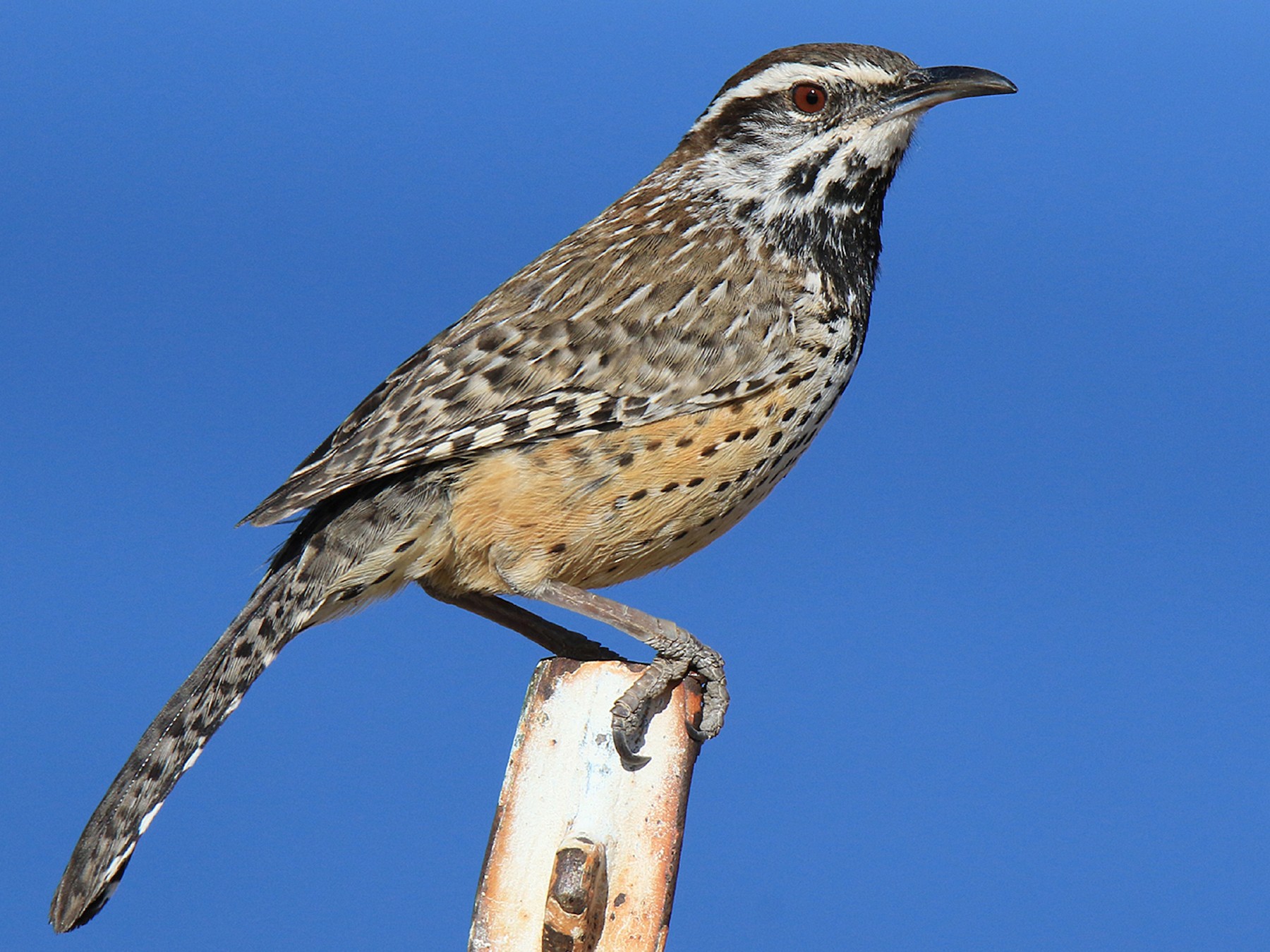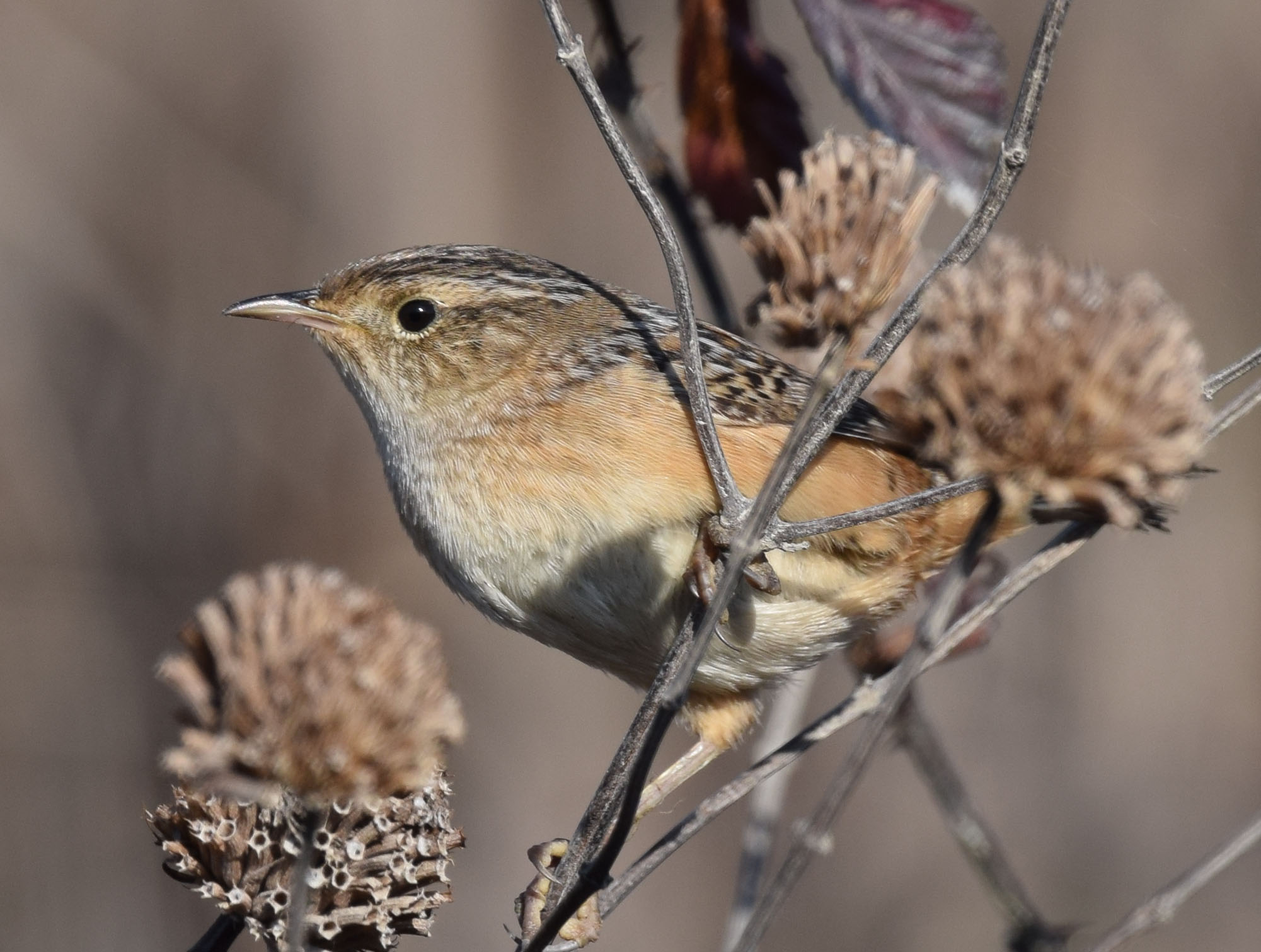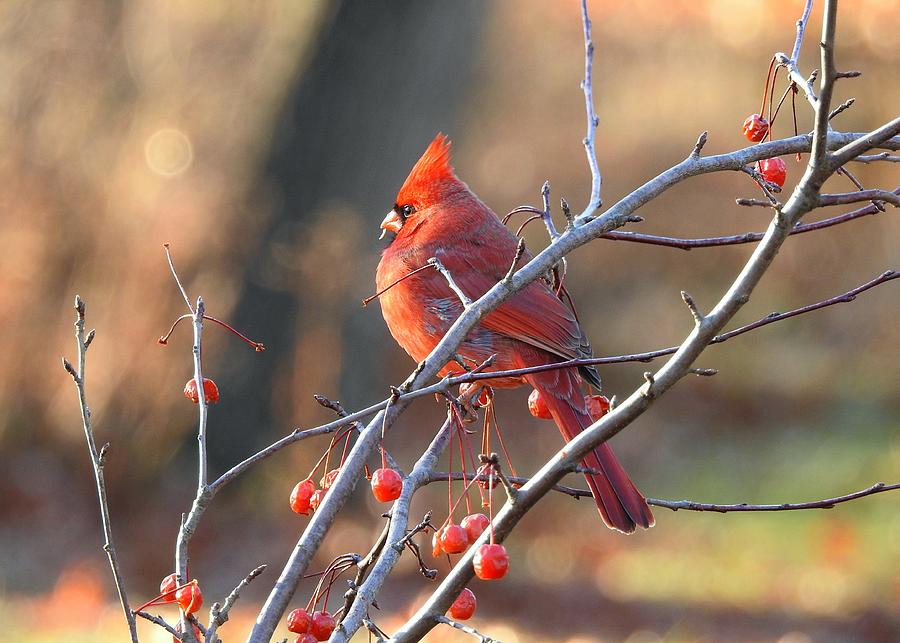Wrens are a family of small, brown passerine birds that are predominantly found in the New World. They are known for their short tails, short wings, and pointed bills.
Most species are inconspicuous and blend with their environments, making them difficult to spot. However, they are loud and known for holding their tails in upright positions, especially when foraging. There are approximately 88 species of wrens divided into 19 genera.
You are reading: Discover 10 Types Of Wren Birds
In this article, we will uncover all types of wren birds, including how to identify them and where they live.

10 Types Of Wren Birds
House Wren

The House Wren (Troglodytes aedon) is a small bird of the wren family, Troglodytidae, and is the most widely distributed native bird in the Americas. It is a plain brown bird with an effervescent voice and is a common backyard bird over nearly the entire Western Hemisphere.
The House Wren is sparrow-sized or smaller, measuring 4.3-5.1 inches in length and weighing 0.3-0.4 ounces. It breeds in a wide variety of semi-open habitats, including suburbs, orchards, woodlots, open forest, streamside groves, mountain pine-oak woods, and many others.
House Wrens build round nests with a central cup, and male House Wrens first build a base of sticks that supports the nest. They are feisty and aggressive not only to other House Wrens but also to other bird species, even those larger than the wren itself.
The House Wren is a short-distance migrant and is often singing its effervescent song from open areas with thick tangles in the breeding season.
Cactus Wren

The Cactus Wren (Campylorhynchus brunneicapillus) is a species of wren that is endemic to the deserts of the southwestern United States and northern and central Mexico. It is the largest wren in the United States and is the state bird of Arizona.
The Cactus Wren has brown plumage with black and white spots as markings, and a distinctive white eyebrow that sweeps to the nape of the neck. The chest is white, while the underparts are cinnamon-buff colored. Both sexes appear similar.
The Cactus Wren can be found in a variety of low, dry habitats, including cactus, yucca, mesquite, arid brush, and deserts. It is most numerous in desert areas with thorny shrubs and cactus, especially where cholla cactus is common. The Cactus Wren is a permanent resident of arid and semi-arid desert regions of the southwestern United States, ranging from southern California, Nevada, and Utah, and central New Mexico and Texas.
Cactus Wrens build nests that are the size and shape of a football with an opening at one end, usually in cholla, but also in palo verde, acacias, saguaros, or hanging pots. They construct this nest out of grasses and other annual plants, but can also include scraps of cloth and other woven fibers that they find.
Read more : Can Birds Eat Rice Cakes
The Cactus Wren feeds on a wide variety of insects, including beetles, ants, wasps, true bugs, grasshoppers, and many others, and eats more plant material than other wrens, including berries, cactus fruits, seeds, and some nectar.
Carolina Wren
The Carolina Wren (Thryothorus ludovicianus) is a common species of wren that is a resident in the eastern half of the United States of America, the extreme south of Ontario, Canada, and the extreme northeast of Mexico. It is the state bird of South Carolina.
The Carolina Wren is a fairly large wren, measuring 4.9 to 5.5 inches in length and weighing 0.63 to 0.81 ounces. It has a chestnut or cinnamon-colored plumage with a pale throat and golden tan undersides.
The Carolina Wren is more brightly colored than most wrens and has a rich musical song. It is mainly insectivorous, feeding on spiders, beetles, grasshoppers, crickets, stick bugs, snails, ants, and bees.
Carolina Wrens are monogamous and breeding pairs stay together for years, until one dies or disappears. They mate between March and October and work together to build a nest, which is often in a cavity that can include tree knots, boxes, cans, mailboxes, vine tangles, and underbrush.
Carolina Wrens are wary and are more often heard than seen, moving in jerky hops and pausing momentarily for chattering or singing. They are common in open woods and backyards in the southeast and prefer damp areas with plenty of shrubs or brush, but also inhabit swamps, farm yards, and gardens.
Marsh Wren
The Marsh Wren (Cistothorus palustris) is a small North American songbird of the wren family, Troglodytidae. Here are some key characteristics of the Marsh Wren:
– The Marsh Wren is sometimes called the long-billed marsh wren to distinguish it from the sedge wren, also known as the short-billed marsh wren.
– It is a small, plump, round-bodied wren with a short tail that it often holds up almost vertically above its back.
– The Marsh Wren has a thin bill and short legs, and is rusty-brown with black-and-white streaks down its back and a white eyebrow.
– It sings a rapid-fire gurgling, trilling, and buzzy song from the depths of the marsh where its secretive life unfolds.
– Males build multiple nests and breed with more than one female, and they also destroy eggs and nestlings of other Marsh Wrens and marsh-nesting birds.
– The Marsh Wren clings to wetland vegetation, tail cocked and legs splayed, often with each foot wrapped around a different stalk.
– Habitat is the best clue for identifying this wren; it rarely strays from cattail marshes and rushes for breeding.
The Marsh Wren is an important species in freshwater wetlands, but has declined with the loss of these habitats.
Rock Wren
The Rock Wren (Salpinctes obsoletus) is a small songbird of the wren family that is native to western North America, Mexico, and Central America. Here are some key characteristics of the Rock Wren:
– The Rock Wren is the only species in the genus Salpinctes.
– It is a small, plump, round-bodied wren with a short tail that it often holds up almost vertically above its back.
– The Rock Wren has a thin bill and short legs, and is pale grayish-brown with black and white speckles on its back and wings, and a whitish throat and buffy sides.
– It forages by hopping along the ground and investigating crevices for insects and spiders, which it extracts with its long, slightly decurved bill.
– The Rock Wren blends right into its pale grayish-brown landscapes of western North America and constantly hops around rocks.
– It is a poor flier and highly terrestrial, feeding in low scrub, open scree, and rockfalls.
– The Rock Wren’s numbers are declining due to habitat loss and fragmentation, and predation by introduced mammals.
– The Rock Wren’s song is a series of high-pitched, tinkling notes that can be heard from a distance.
The Rock Wren is an important species in its ecosystem, and its decline highlights the need for conservation efforts to protect its habitat.
Winter Wren
The Winter Wren (Troglodytes hiemalis) is a small North American bird and a member of the mainly New World wren family Troglodytidae. Here are some key facts about the Winter Wren:
– The Winter Wren was once lumped with the Pacific Wren of western North America and the Eurasian Wren of Eurasia under the name winter wren.
– The Winter Wren is a plump, round ball with a stubby tail that it usually holds straight up.
– Its bill is small and thin, in keeping with its diminutive appearance.
– The Winter Wren is larger than a Ruby-throated Hummingbird but smaller than a Carolina Wren.
– It measures 3.1-4.7 inches in length and weighs 0.3-0.4 ounces.
– The Winter Wren is subtly patterned, with indistinct pale eyebrow and diffuse dark barring on flanks and wings.
– It is a common bird that breeds mostly in moist coniferous forest with an understory of dense thickets.
– The Winter Wren feeds mainly on insects and spiders, but in winter, it also takes large pupae and some seeds.
– Despite its name, the Winter Wren leaves most northern areas in winter, and migration is relatively early in spring and late in fall.
– The Winter Wren is still widespread and common, but its numbers are declining in some areas due to habitat loss and fragmentation.
The Winter Wren is a fascinating bird that is an important part of its ecosystem, and its decline highlights the need for conservation efforts to protect its habitat.
Sedge Wren

The Sedge Wren (Cistothorus platensis) is a small bird of the wren family, Troglodytidae, that is found in North and South America. Here are some key characteristics of the Sedge Wren:
– The Sedge Wren was formerly known as the Short-billed Marsh Wren, but was split from the Marsh Wren based on genetic and vocal differences.
– It is a small, plump, round-bodied wren with a short tail that it often holds up almost vertically above its back.
– The Sedge Wren has a thin bill and short wings, and is russet-brown with black and white streaks on its back and wings, and a pale eyebrow and throat.
– It is a secretive bird that is difficult to see, but can be heard singing a high-pitched, insect-like trill from dense vegetation in wet fields, marshes, and bogs.
– The Sedge Wren feeds mainly on insects and spiders, which it gleans from vegetation and the ground.
– It breeds in wet meadows, bogs, and freshwater marshes with dense vegetation, and builds a cup-shaped nest of grasses and sedges on the ground or in a tussock.
– The Sedge Wren is migratory, breeding in the northern United States and Canada and wintering in the southern United States, Mexico, and Central America.
– The Sedge Wren is declining in some areas due to habitat loss and degradation, and is listed as a species of concern in some states.
Read more : Can Budgies Eat Kale
The Sedge Wren is an important species in wetland ecosystems, and its decline highlights the need for conservation efforts to protect its habitat.
Pacific Wren
The Pacific Wren (Troglodytes pacificus) is a small North American bird and a member of the mainly New World wren family Troglodytidae. Here are some key characteristics of the Pacific Wren:
– The Pacific Wren was once lumped with the Winter Wren of eastern North America and the Eurasian Wren of Eurasia as the winter wren.
– It is a tiny brown wren with a short, stubby tail that it usually holds upright, giving it a round appearance.
– The Pacific Wren has a thin bill and short wings, and is dark brown with black and white speckles on its back and wings, and a pale eyebrow and throat.
– It is most common in old-growth evergreen forests, but also lives in deciduous forests, treeless islands in Alaska, and in mixed-species forests.
– The Pacific Wren is a permanent resident in most of its range, north to the coast and islands of Alaska, and populations from interior regions of western Canada and the northern United States migrate south in winter.
– The Pacific Wren feeds mainly on insects and spiders, which it gleans from vegetation and the ground.
– It nests mostly in coniferous forests, especially those of spruce and fir, where it is often identified by its long and exuberant song.
– The Pacific Wren’s song is a complex, tinkling, bubbly trill that is considered a “pinnacle of song complexity” by some researchers.
The Pacific Wren is an important species in its ecosystem, and its decline highlights the need for conservation efforts to protect its habitat.
Bewick’s Wren
The Bewick’s Wren (Thryomanes bewickii) is a small wren native to North America and is the only species placed in the genus Thryomanes. Here are some key characteristics of the Bewick’s Wren:
– The Bewick’s Wren is about 14 cm (5.5 in) long, grey-brown above, white below, with a long white eyebrow.
– It has a long tail that is tipped in white, which distinguishes it from the Carolina Wren.
– The Bewick’s Wren is a noisy and hyperactive bird that is often seen flicking its long tail as it hops from branch to branch.
– It is a common bird that lives in thickets, brush piles, hedgerows, open woodlands, and scrubby areas, often near streams.
– The Bewick’s Wren feeds mainly on insects and spiders, which it gleans from vegetation and the ground.
– It builds a cup-shaped nest of grasses and other materials in a tree cavity, birdhouse, or other sheltered location.
– The Bewick’s Wren’s song is loud and melodious, much like the song of other wrens.
The Bewick’s Wren is an important species in its ecosystem, and its decline highlights the need for conservation efforts to protect its habitat.
Canyon Wren
The Canyon Wren (Catherpes mexicanus) is a small North American songbird of the wren family Troglodytidae. Here are some key characteristics of the Canyon Wren:
– The Canyon Wren is resident throughout its range and is generally found in arid, rocky cliffs, outcrops, and canyons.
– It is a small bird that is hard to see on its rocky habitat; however, it can be heard throughout the canyons by its distinctive, loud song.
– The Canyon Wren is about 4.5-5 inches long and weighs about 0.3-0.4 ounces.
– It has a long, thin bill, a short tail, and is brown with black and white speckles on its back and wings, and a pale eyebrow and throat.
– The Canyon Wren feeds mainly on insects and spiders, which it gleans from vegetation and the ground.
– It builds a cup-shaped nest of grasses and other materials in a tree cavity, birdhouse, or other sheltered location.
– The Canyon Wren’s song is a series of sweet, cascading whistles that echo off the rocky walls of its canyon habitat.
The Canyon Wren is an important species in its ecosystem, and its decline highlights the need for conservation efforts to protect its habitat.
FAQS
1. What is a wren?
A wren is a small, brown passerine bird that is predominantly found in the New World.
2. How many types of wrens are there?
There are approximately 88 species of wrens divided into 19 genera.
3. What are some common types of wrens?
Some common types of wrens include the House Wren, Carolina Wren, Pacific Wren, Winter Wren, Rock Wren, Bewick’s Wren, Sedge Wren, and Cactus Wren.
4. What do wrens eat?
Wrens are mainly insectivorous, feeding on spiders, beetles, grasshoppers, crickets, stick bugs, snails, ants, and bees. Some species also eat berries, cactus fruits, seeds, and nectar.
5. Where do wrens live?
Wrens can be found in a variety of habitats, including woods, backyards, savannas, farms, wetlands, deserts, and rocky cliffs.
6. How can I attract wrens to my backyard?
To attract wrens to your backyard, you can provide them with a nest box painted in their favorite colors of red or green, and offer them a variety of insects and spiders to eat.
7. Are wrens declining in numbers?
Some species of wrens are declining in numbers due to habitat loss and fragmentation, and are listed as species of concern in some states.
8. How can I tell different types of wrens apart?
Different types of wrens can be identified by their size, coloration, markings, habitat, and song.
Source: https://petstutorial.com
Category: Birds










